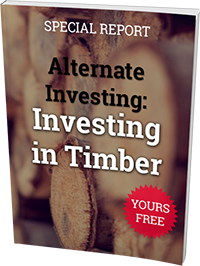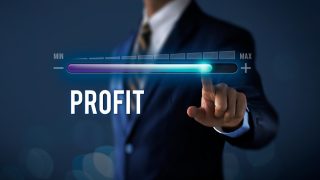Your Smart Money Masters portfolio had one of its strongest months in recent memory.
Last month’s recommendation, Monish Pabrai’s Fiat Chrysler Automotive N.V. (FCAU), was well timed. Following rumors surrounding a bid for the company’s Jeep division by Chinese investors, the stock soared 40.71%.
Bill Ackman’s Restaurant Brands International (QSR) jumped 8.72%. Carl Icahn’s bet on PayPal Holdings Inc. (PYPL) gained 7.93%. It is now your Smart Money Masters portfolio’s top performer, up 53.53%, since my initial recommendation. Dan Loeb’s Baxter International (BAX) had a strong month with the stock closing 7.42% higher. Wilbur Ross’ bet on Navigator Holdings (NVGS) continued its rebound, rising 6.25%.
Let’s review the reasons behind Fiat Chrysler’s massive gains over the past month. Fiat Chrysler initially jumped higher on news of a potential Chinese bid to buy out the entire company. The stock soared yet again on rumors that the company would sell some of its well-known lines to other suitors.
China’s Great Wall Motors expressed an interest in buying the legendary Jeep brand. The prospect of the sale lit a fire under the stock. Morgan Stanley calculated that if Fiat Chrysler spun off its Jeep brand, it could be worth as much as all of Fiat Chrysler today. All of this implies a huge upside for Fiat Chrysler, a company that is now “in play” on several levels.
Betting Big on the Florida Panhandle
In the aftermath of Hurricane Irma, it’s ironic that this month’s Smart Money Masters recommendation, The St. Joe Company (JOE), is a bet on Florida real estate.
Specifically, St. Joe is a bet on the growth and development of northwestern Florida.
St. Joe is also the largest position in Bruce Berkowitz’s Fairholme Fund. Berkowitz has invested a whopping 48.67% of the Fairholme Fund in the company. That’s a daring move, even for a committed contrarian.
The harsh truth is that St. Joe has been a dud investment over the past decade. After hitting a high of $81.54 a share at the peak of the real estate boom in June 2005, shares of St. Joe have fallen sharply. Today, shares trade at around $18.55. That’s the same level the stock traded at in February 2009, and a level that it first hit in January 1994.
Yet, there are reasons that 2017 may be the year in which the company’s stock price may begin a sustained recovery.
Investment Philosophy
Like many of the other Smart Money Masters, Berkowitz is a value investor. His personal “bible of investing” is Graham and Dodd’s 1934 classic, “Security Analysis.”
Value investing starts with fundamental, bottom-up research and financial statement analysis. The goal is to identify stocks that sell at a discount to their intrinsic value. A value investor looks for stocks that both provide a margin of safety and that will be worth far more in the long term.
Berkowitz’s ideal investment is a company that has exceptional management, generates free cash flow and is “ridiculously cheap.” He will also invest in mediocre companies, if the price is right. But Berkowitz will do so only if he identifies a catalyst — an event that will narrow the gap between market price and intrinsic value in a foreseeable amount of time.
While he is primarily a value investor, Berkowitz also draws inspiration from other styles of investing.
First, Berkowitz does not believe in diversification. He runs an extremely concentrated portfolio. His role model here is more Charlie Munger than Warren Buffett.
Second, Berkowitz is an activist investor, much like Bill Ackman or Carl Icahn. Today, Berkowitz serves on the boards of his two biggest investments: The St. Joe Co. (JOE) and Sears Holdings Corp. (SHLD).
Finally, Berkowitz is a contrarian investor like the late Sir John Templeton. Berkowitz sees market crashes and panics as opportunities to buy more of the companies he loves at fire sale prices. Berkowitz is happy to “average down” share prices.
As he puts it: “When the crowd stampedes left, we advance right — with courage of conviction.”
The Roller Coaster of Bruce Berkowitz’s Career
Berkowitz joined the pantheon of top investors in the late 1990s and early 2000s. In 2010, Morningstar named Bruce Berkowitz U.S. stock fund manager of the decade, beating out the likes of Bill Miller, Ken Heebner and Tom Marsico.
Berkowitz’s Fairholme fund had generated a 10-year annualized return of 13.2% through the end of 2009. The average return of a comparable mutual fund over the same period was 0.01%.
How did he do it?
Berkowitz Is Far from a Wall Street Traditionalist
Berkowitz grew up in Chelsea, Massachusetts, a gritty Boston suburb. His father
was a taxi driver who ran a bookmaking operation on the side.
His father had a heart attack when Bruce was 15. The young Bruce took over the bookmaking operation while his dad recovered. There, he
got his first exposure to betting lines for horse races and baseball games. His biggest lesson? “I learned hope and dreams and the perverse psychology that makes people make stupid decisions,” Berkowitz said.
Berkowitz was the first in his family to attend college. He graduated from the University of Massachusetts, Amherst.
His first job was with the Strategic Planning Institute in Cambridge, Massachusetts. He later moved to Manchester in the United Kingdom. He began trading stocks through the local Merrill Lynch office. He joined Merrill’s London brokerage office in 1983.
Berkowitz quickly emerged as the office’s top fixed-income salesman. Berkowitz returned to the United States in 1989 and became a
senior portfolio manager for Lehman Brothers in New Jersey. In 1993, he became managing director at Smith Barney Investment Advisers.
In 1997, Berkowitz set up his own business, poaching about $400 million in client accounts.
For its first six years, Fairholme operated from an office in Short Hills, New Jersey. In 2006, Berkowitz decamped to Miami, attracted by the warm weather and low taxes.
The move also put space between himself and the din of conflicting opinions on Wall Street.
Berkowitz works from his Coral Gables, Florida, home. He only
occasionally calls on his staff located at a nearby white-and-glass office building. His style is opposite to the traditional ways of Wall Street and he usually wears boat shoes and jeans or khakis. He runs a charitable foundation with his wife.
Berkowitz also collects art, including works by Jackson Pollock and Andy Warhol.
Berkowitz has never been coy about his concentrated bets and the high volatility of his fund. As he put it, “The people who had the smoothest ride were those in Bernie Madoff. Life is not smooth.”
Berkowitz avoided the technology boom and bust of 2000. Pre financial crisis of 2008, Berkowitz made profitable big bets on energy and defense.
Post financial crisis, he made a fortune in financial stocks like American International Group Inc. (AIG) and Bank of America Corp. (BAC).
A fawning article titled “The Mega Mind of Miami” in the December 10, 2010, edition of Fortune magazine marked the height of Berkowitz’s investment prowess. It has been a rough ride for Berkowitz ever since.
Since 2011, Berkowitz’s Fairholme Fund has lost 89% of its assets due to poor performance. With $2.2 billion in assets, the Fairholme fund is just a fraction of its $20 billion former size. Berkowitz is now the fund’s largest client.
Berkowitz’s performance captures the agony of the value investor. Berkowitz’s big bets on real estate assets like St. Joe and Sears Holdings have yet to pay off this decade.
Berkowitz has been unapologetic for Fairholme’s poor returns. He says that he always has promised his investors ultra-concentrated, often contrarian bets and high volatility.
The St. Joe Company — Berkowitz’s Biggest Bet
Berkowitz has said that if he could only invest in one of his positions, St. Joe would be it. Putting his money where his mouth is, Berkowitz raised his stake in St. Joe on July 14 by 1.37% when he bought 343,428 shares for $18.55 per share.
Let’s review Berkowitz’s investment case for St. Joe. The St. Joe Company (JOE) is a Florida-based real estate developer and manager. The company currently owns over 120,000 acres across the Florida Panhandle Region from the international airport (ECP) to the Gulf of Mexico in Florida. St. Joe has the rights to build 120,000 homes and millions of square feet of commercial resort and club properties — at zero land costs.
An investment in St. Joe is about bringing a long-term strategic vision to life for northwest Florida. As the last warm undeveloped vacation spot in the United States, Berkowitz believes that St. Joe’s land is even more beautiful than the Hamptons. State and local officials, including Governor Rick Scott and the state’s Commissioner of Agriculture Adam Putnam, all actively support the development of northwest Florida.
As Berkowitz has said, “To outperform in sports, you must go to where the ball will be — not where it already is. The same is true of investing and our investment in St. Joe.”
St. Joe has always had massive potential given the size of its land holdings alone. I recall reading about the company in value investing financial newsletters as far back as 1994. Those sizable holdings have made the stock a “value trap” over the last 30 years. So what makes St. Joe different today?
Since Berkowitz became a shareholder in late 2010, St. Joe has streamlined real estate and forestry operations by 50%. It has reduced its corporate expenses by 35%. It has sold off
380,000 acres of non-strategic timberland and rural land for $562 million.
Today, St. Joe is investing in projects that generate recurring revenue through joint ventures, new programs and projects. As chairman of St. Joe’s Board of Directors, Berkowitz has promised that every new St. Joe’s project must be profitable from day one.
Here are four specific areas in which St. Joe is bringing its vision for northwest Florida to life.
I. Global High-tech Manufacturing Facilities through ‘Venture Crossings’
St. Joe recently built a 137,000-square-foot facility and leased it to GKN plc, a London-based automotive and aerospace components company. GKN will create 170 aerospace manufacturing jobs with a median annual salary of about
$65,000. St. Joe also expects another 400 to 500
jobs to be created from the secondary effects. Strategically located next to the region’s airport, GKN may be just the first of many high-tech companies that will move to northwest Florida. See www.venturecrossings.com.
II. Northwest Florida Beaches International Airport
The newest U.S. international airport, Northwest Florida Beaches International Airport, saw more than 1,000,000 travelers per year for the first time. That number is set to explode as airlines establish additional direct routes from New York. St. Joe is now looking to build new hotels, a new convention center and even a very large national sports facility to support the additional business and tourism.
III. Primary Homes
St. Joe is building rental apartments, townhomes and condominiums. The company is putting up 240 units in a joint venture with HomeCorp near Pier Park. Projects like this bring along retail and village spaces, as well as commercial facilities, health care, education and transportation. See www.watersound.com.
IV. Focus on Education, Health Care and STEM Projects
St. Joe is working to improve quality of education and health care in the region. New schools will focus on the “STEM” areas: sciences, technology, engineering and mathematics. St. Joe is in talks to expand the health care system in the area. The company is also working hard on a large biomedical engineering project.
St. Joe’s Prospects in the Coming Years
Berkowitz believes that St. Joe has at least 30 years of organic growth ahead of it.
The land value in St. Joe always has been there. Berkowitz now sees a catalyst to unlock this value.
Active project management, combined with a strategic pruning of non-performing assets, is showing up in the company’s financial results.
After years of losses, St. Joe has been profitable in each of the last five quarters. Most recently, St. Joe reported second-quarter 2017 net income per share of 15 cents, well ahead of the prior-year quarter figure of two cents.
Make no mistake: St. Joe is a bet on the future of northwest Florida. The potential increase in the value of St. Joe’s real estate holdings provides the biggest upside potential for its shareholders.
So St. Joe is more like a private investment in actively managed undeveloped land. If you, like Bruce Berkowitz, believe that the Florida panhandle has a spectacular future ahead of it, then this is the investment for you.
Just don’t expect a steady ride.



